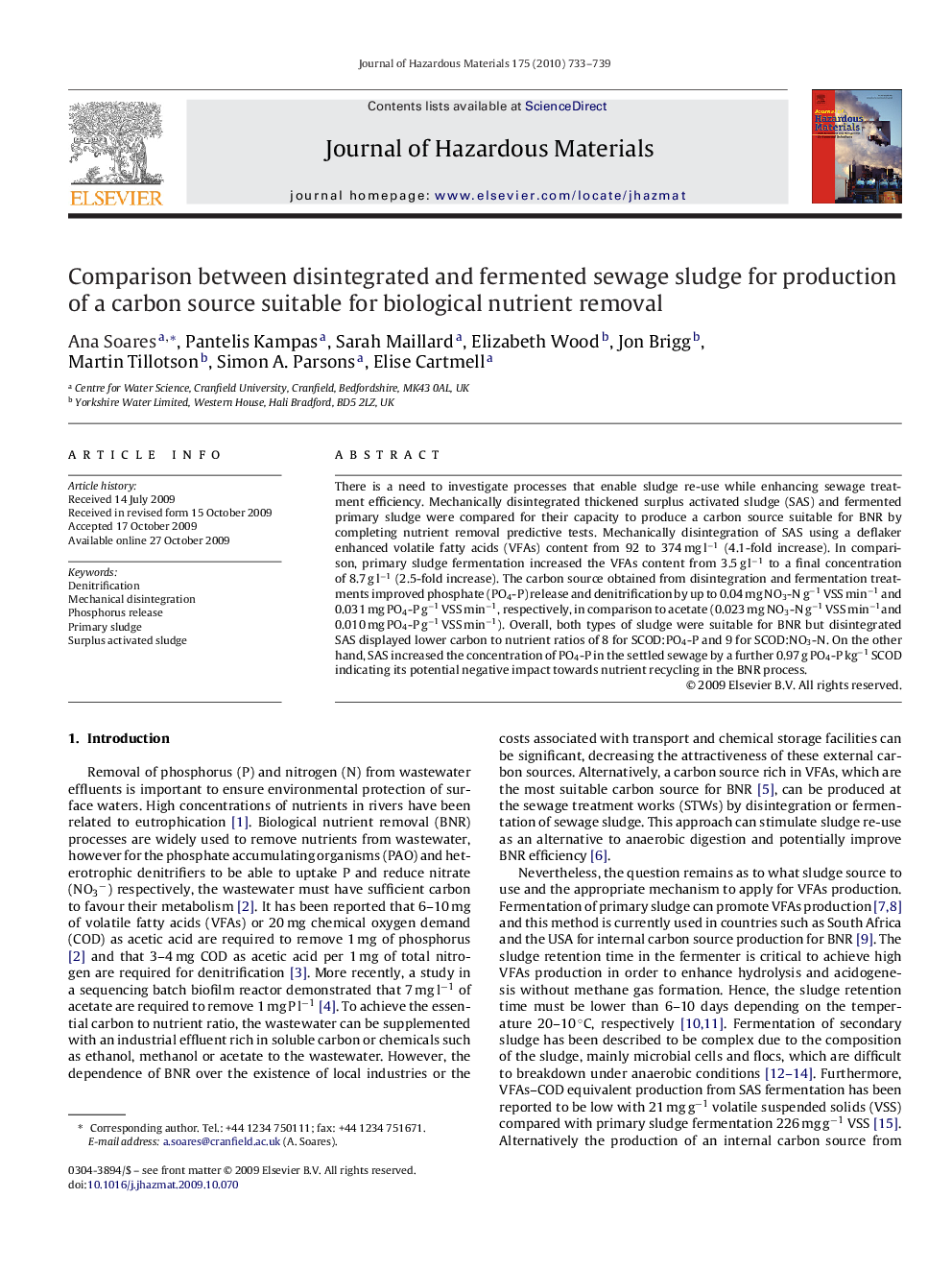| کد مقاله | کد نشریه | سال انتشار | مقاله انگلیسی | نسخه تمام متن |
|---|---|---|---|---|
| 580518 | 1453153 | 2010 | 7 صفحه PDF | دانلود رایگان |
عنوان انگلیسی مقاله ISI
Comparison between disintegrated and fermented sewage sludge for production of a carbon source suitable for biological nutrient removal
دانلود مقاله + سفارش ترجمه
دانلود مقاله ISI انگلیسی
رایگان برای ایرانیان
کلمات کلیدی
موضوعات مرتبط
مهندسی و علوم پایه
مهندسی شیمی
بهداشت و امنیت شیمی
پیش نمایش صفحه اول مقاله

چکیده انگلیسی
There is a need to investigate processes that enable sludge re-use while enhancing sewage treatment efficiency. Mechanically disintegrated thickened surplus activated sludge (SAS) and fermented primary sludge were compared for their capacity to produce a carbon source suitable for BNR by completing nutrient removal predictive tests. Mechanically disintegration of SAS using a deflaker enhanced volatile fatty acids (VFAs) content from 92 to 374 mg lâ1 (4.1-fold increase). In comparison, primary sludge fermentation increased the VFAs content from 3.5 g lâ1 to a final concentration of 8.7 g lâ1 (2.5-fold increase). The carbon source obtained from disintegration and fermentation treatments improved phosphate (PO4-P) release and denitrification by up to 0.04 mg NO3-N gâ1 VSS minâ1 and 0.031 mg PO4-P gâ1 VSS minâ1, respectively, in comparison to acetate (0.023 mg NO3-N gâ1 VSS minâ1and 0.010 mg PO4-P gâ1 VSS minâ1). Overall, both types of sludge were suitable for BNR but disintegrated SAS displayed lower carbon to nutrient ratios of 8 for SCOD:PO4-P and 9 for SCOD:NO3-N. On the other hand, SAS increased the concentration of PO4-P in the settled sewage by a further 0.97 g PO4-P kgâ1 SCOD indicating its potential negative impact towards nutrient recycling in the BNR process.
ناشر
Database: Elsevier - ScienceDirect (ساینس دایرکت)
Journal: Journal of Hazardous Materials - Volume 175, Issues 1â3, 15 March 2010, Pages 733-739
Journal: Journal of Hazardous Materials - Volume 175, Issues 1â3, 15 March 2010, Pages 733-739
نویسندگان
Ana Soares, Pantelis Kampas, Sarah Maillard, Elizabeth Wood, Jon Brigg, Martin Tillotson, Simon A. Parsons, Elise Cartmell,